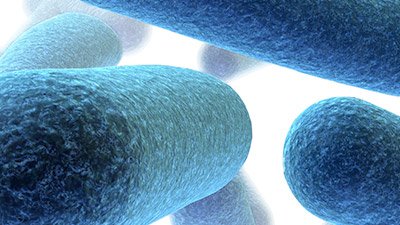
Traditional Treatments for Infections May Strengthen Antibotic Resistance
Traditional “hit early and hit hard” approach to treating severe infections may increase antibiotic resistance.
News Source
- Science: “Combining Antibiotics May Backfire”
Conventional medical wisdom has long held that the safest approach to treating severe infections involves combining antibiotics that work in different ways in order to “hit early and hit hard.”1 The idea is that attacking with antibiotics that employ different mechanisms of action, bacteria resistant to one drug would likely succumb to the other. Thus multiple antibiotics are thought to work “synergistically” to overcome the problem of bacterial resistance. A new study suggests otherwise.
To test the effectiveness of combination antibiotics, Robert Beardmore’s team at the UK’s University of Exeter subjected various strains of Escherichia coli to varying amounts of two antibiotics, doxycycline and erythromycin. While the combination resulted in a dramatic 90-95% drop in bacterial growth the first day, bacterial growth rebounded and skyrocketed as much as 500% by the next day.
Presumably, by killing off competing bacteria very efficiently, bacteria possessing the genetic ability to resist grew in abundance. To determine how this happened, the team sequenced the genomes of the highly resistant, luxuriantly growing bacteria. They found that the original resistant bacteria had amplified the genetic region that provided the information coding for several resistance mechanisms. (In this case, one of those mechanisms included an “efflux pump” that pumps the antibiotic back out of the bacteria.) This occurred through duplication of existing genes.

Eurythromicin. Image by National Institutes of Health, via Wikimedia Commons.

Doxycycline. Image by Shorelander~commonswiki, via Wikimedia Commons.
Erythromycin and doxycycline, two common antibiotics, were used in combination to attack E. coli bacteria growing in test tubes. But the combination backfired, and after initially wiping out most of the bacteria, the most resistant bacteria—no longer faced with competition for resources—multiplied at an astounding rate.
The researchers are calling this phenomenon the “smile-frown transition.”2 “Rapid increases in resistance to antibiotics can occur when regions of the genome containing resistance genes are duplicated,”3 they write, and this is exactly what happened. And the higher the doses of the antibiotics, they found, the more dramatic the smile-frown transition.
Of course these controlled experiments took place in test tubes, not in living animals or people, in which other variables such as natural immunity would complicate matters. Also, only E. coli bacteria were tested, and other pathogens may behave differently. Therefore, the researchers advise caution is extrapolating their findings to clinical situations until much more research is done. Nevertheless, the principles demonstrated here could have profound implications for the way we treat infection and merit controlled studies in vivo to determine whether seven decades of conventional wisdom needs to be re-thought.
Beardman indicates that the combination antibiotics sped up bacterial evolution. “You want to slow down evolution,” he explains. “[Bacterial evolution] can happen fast and it can kill you.” But is that really true? Did any molecules-to-man evolution actually happen here? Antibiotic resistance is the oft-cited example of evolution in action, but in reality no evolution took place. None. Not only did the E. coli bacteria remain E. coli bacteria, but the original resistant E. coli already possessed the genetic information to resist the antibiotics. Random duplication of bits of genetic information is quite common in microbes. And those bacteria expressing more of the resistance genes in this case were best able to survive and reproduce, producing a “super-resistant” bacterial population. But no new genetic information was required, just more of the information already present.
Finally, once competing bacteria got killed off, the hardy resistors multiplied robustly. This is natural selection in action. And, in truth, competition between microbes is a vital principle among microbes and a mechanism by which we stay healthy—in that “good” non-pathogenic bacteria in our intestines ordinarily keep the “bad” pathogenic bacterial populations there in check through competition for resources. But natural selection is not the same thing as evolution. In none of this scenario did any new genetic information get produced.
Further Reading
For more information about the evolution of novel genes:
- A Poke in the Eye?
- De-Regulation of an Existing Trait (evolution of a novelty?)
- New Function through Gene Duplication (gene genesis)
- Bacteria Evolve “Key Innovation” or Not?
- Dear Huff Post: Do Your Homework!
- Gene Duplication
- Molecular Storytelling and Degenerative Complexity
- Is Natural Selection the Same Thing as Evolution?
- The Role of Genomic Islands, Mutation, and Displacement in the Origin of Bacterial Pathogenicity
- Mamba Venom Derives from Gene Duplication (mamba magic)
- Molecular Analysis Suggests Common Origin for Animal Vision (the eyes have it)
For more information about antibiotic resistance:
- Antibiotic Resistance of Bacteria: An Example of Evolution in Action?
- Antibiotic Resistance an Age-Old Factor (ancient antibiotic resistance)
- (deep resistance)
- Ancient Protein a Potent Antimicrobial (ancient antimicrobials down under)
- Bacteria: More Good than Bad and Ugly
This information is intended for general education purposes only and is not intended as professional medical advice. The information should not be relied upon as a substitute for medical advice from your doctor or other healthcare professional. If you have specific questions about any medical condition, diagnosis, or treatment, you should consult your doctor or other healthcare provider.
For More Information: Get Answers
Remember, if you see a news story that might merit some attention, let us know about it! (Note: if the story originates from the Associated Press, FOX News, MSNBC, the New York Times, or another major national media outlet, we will most likely have already heard about it.) And thanks to all of our readers who have submitted great news tips to us. If you didn’t catch all the latest News to Know, why not take a look to see what you’ve missed?
(Please note that links will take you directly to the source. Answers in Genesis is not responsible for content on the websites to which we refer. For more information, please see our Privacy Policy.)
Footnotes
- Rafael Pena-Miller et al., “When the Most Potent Combination of Antibiotics Selects for the Greatest Bacterial Load: The Smile-Frown Transition,” PLoS Biology 11, no. 4 (April 23, 2013): e1001540, doi:10.1371/journal.pbio.1001540.
- Ibid.
- Ibid.

Answers in Genesis is an apologetics ministry, dedicated to helping Christians defend their faith and proclaim the good news of Jesus Christ.
- Customer Service 800.778.3390
- Available Monday–Friday | 9 AM–5 PM ET
- © 2025 Answers in Genesis


